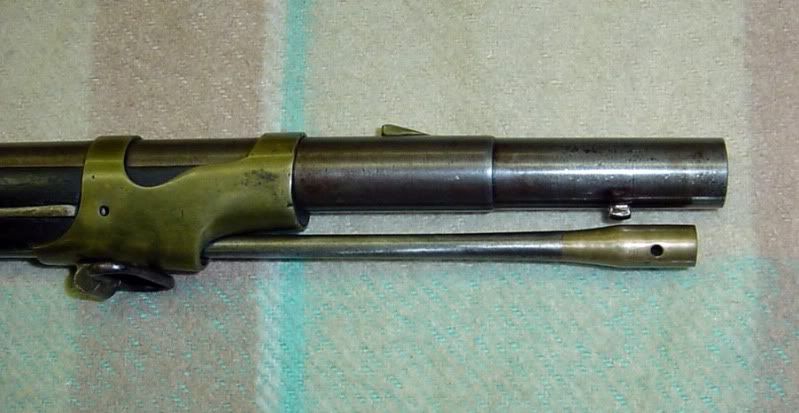Re: A Mississippi Rifle by Todd Watts
I have to agree with Curt. After almost 40 years of reading and studying American and European military rifles and examining every example possible plus reading every source of information on said military arms (period and modern, some excellent some very poor) I have never heard of the US M1841 Rifle referred to as the "Common Rifle". That was from the period of time when the US M1819 Rifle (the Hall breach loader) was adopted. The need for a way to distinguish between the standard military rifles (Rifle, US M1803 and Rifle, US M1817) soon became apparent. The term "Common Rifle" could refer to either the M1803 or the M1817 (also sometimes referred to as the M1814 which was a developmental pattern in production) but modern collectors have adopted that name to refer to the more modern arm. I've seen half dozen nicknames used for the M1841 but never have never seen the appellation "Common Rifle" used to refer to it.
Another fly in the ointment is the Model dating of US military firearms as opposed to the terminology used when these guns were in use. Most model dates up until the M1816 are collector's terms of convenience. Example: there was NEVER a US M1795 (or M1808 or M1812 Muskets) - they were referred to as "Charleville Pattern Muskets" in period documentation. Even the official manuals of the period make mistakes. The US M1840 Musket started out as the M1835 but further slight modification caused the date designation to be officially changed to "M1840". While the 1835 date was still occasionally mistakenly used in manuals in period, the official model designation was "M1840". It goes on and on......
I have to agree with Curt. After almost 40 years of reading and studying American and European military rifles and examining every example possible plus reading every source of information on said military arms (period and modern, some excellent some very poor) I have never heard of the US M1841 Rifle referred to as the "Common Rifle". That was from the period of time when the US M1819 Rifle (the Hall breach loader) was adopted. The need for a way to distinguish between the standard military rifles (Rifle, US M1803 and Rifle, US M1817) soon became apparent. The term "Common Rifle" could refer to either the M1803 or the M1817 (also sometimes referred to as the M1814 which was a developmental pattern in production) but modern collectors have adopted that name to refer to the more modern arm. I've seen half dozen nicknames used for the M1841 but never have never seen the appellation "Common Rifle" used to refer to it.
Another fly in the ointment is the Model dating of US military firearms as opposed to the terminology used when these guns were in use. Most model dates up until the M1816 are collector's terms of convenience. Example: there was NEVER a US M1795 (or M1808 or M1812 Muskets) - they were referred to as "Charleville Pattern Muskets" in period documentation. Even the official manuals of the period make mistakes. The US M1840 Musket started out as the M1835 but further slight modification caused the date designation to be officially changed to "M1840". While the 1835 date was still occasionally mistakenly used in manuals in period, the official model designation was "M1840". It goes on and on......


 Make it a company of the 7th TN Inf and I'll be in there as well, honoring my Gr-Gr-Grandfather.
Make it a company of the 7th TN Inf and I'll be in there as well, honoring my Gr-Gr-Grandfather.




Comment